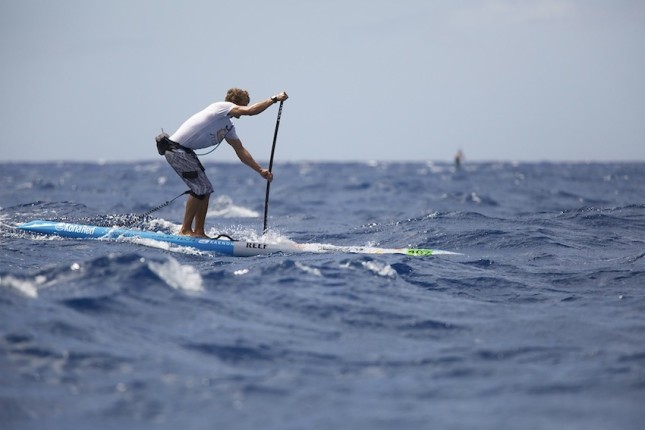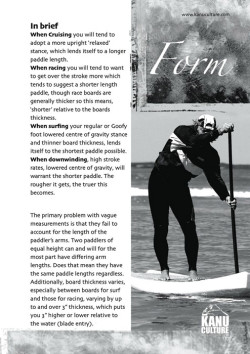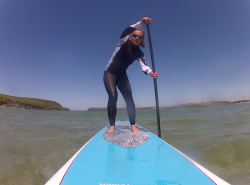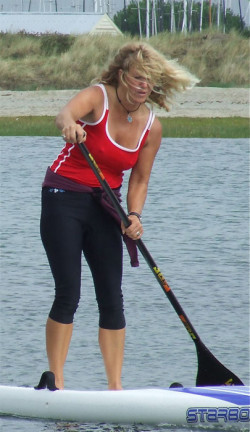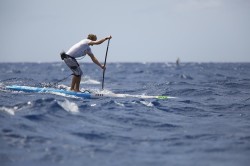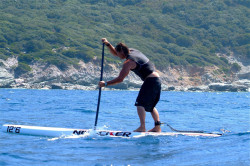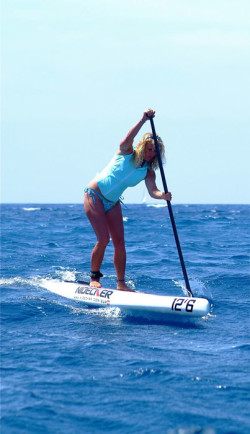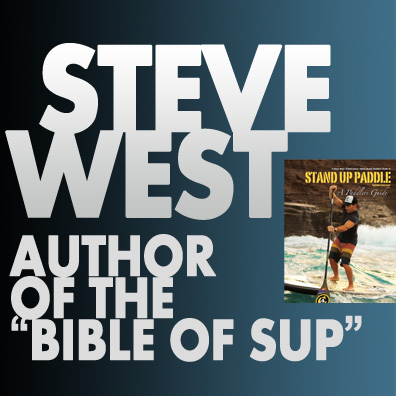
The Age Old Question: How Do I Choose The Right Paddle Length?
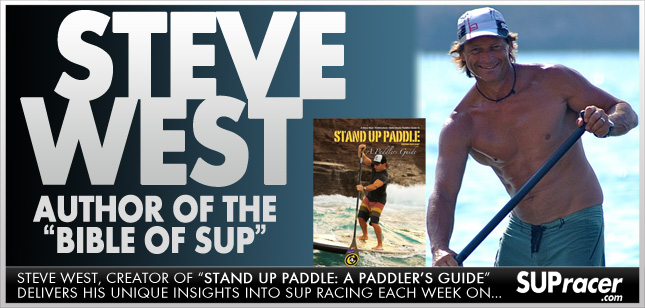
Boss Man’s note: Time for another great guest post by SUP expert author Steve West, creator of the awesome new SUP book Stand Up Paddle: A Paddler’s Guide.
Steve is sharing excerpts out of his book with us each week, so check out latest instalment below and learn how long your SUP paddle really should be (and what can go wrong if it’s not the right size…). When you’re done with that, go and take a closer look at Steve’s book. If you’re a fan of SUP, you really should own a copy.
How Long Should My SUP Paddle Be?
This week things are getting a bit more in depth and that’s a good thing. Micro-managing your sport allows you to connect with it a higher level of consciousness which should be engaging and challenging, if not at times a little frustrating, but above all transcends the mere physical act of paddling itself.
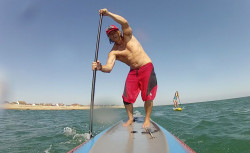 What paddle length from tip to grip?
What paddle length from tip to grip?
This singular topic has evolved into something of a dark-art, which has slipped into the abyss of myth, nonsense and half truths. When I hear guess`timates, stating the grip need be so many inches above head height as a rule of thumb or absolute or worse still a ‘shaka’ height above the head, it screams “I really have no idea” and reveals four universal truths; it fails to account for board thickness, individual physiology (arm length, shoulder width) paddling style versus that of technique or that of application in the context of cruising, racing, surfing, downwind, whitewater and all else in-between. If you have a casual indifference to getting this right, then you clearly don’t value micro-managing the important stuff.
The most critical tip that can be given; paddle with an overly long paddle and you’ll be on the pathway to injury, the most serious of which, is rotator-cuff injury. It may not happen immediately, but given time and the on-set of wear and tear, it will. What you need know is, what defines an overly-long paddle? Simply put, if mid-way through your stroke, your top hand is significantly above the level of your head and your elbow higher than the level of your shoulder, you’re already there.
Rotator-cuff injury
Rotator cuff injury and inflammation is one of the most common causes of shoulder pain. There are three common conditions that can affect the rotator cuff: rotator cuff tendonitis, impingement syndrome and a rotator cuff tear.Of these, tendonitis is the most common form of paddling related rotator cuff injury.
What causes rotator cuff tendonitis?
When your arm hangs by your side, you can be assumed to be in neutral. As you progressively raise your arm, the head of the humerus, rotates within the glenoid cavity of the scapula (upper shoulder) and as it does so, it progressively closes the space within the cavity. When your arm is fully raised, this space is minimal. Exerting downward force when the arm is raised high (elbow above the level of the shoulder) can lead to excessive wear and tear on the tendons or the thin sheath which covers the head of the humerus and the glenoid cavity, leading to inflammation.
And that’s why you don’t want your elbow working above the level of your shoulder.
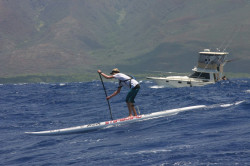 Consequences of differing paddle lengths.
Consequences of differing paddle lengths.
With relation to some of the important bio-mechanical consequences which manifest from use of a paddle which is either; too long, optimum or too short, the following consequences arise.
Too long and you will be constantly working from ‘behind’ the stroke, compromising the degree of compression you can generate, creating an over-reliance on leverage, sacrificing some loss of control of the blade, while over working and straining the rotator cuff. At an optimum length, there should be balance between reach, leverage and compression so as you can apply weight ‘over’ and ‘into’ the stroke. Too short and reach and leverage will be compromised with over emphasis on compression, setting up a somewhat circular paddle path as against that of a linear one. So how do we determine optimum length?
Canoe paddling has some synergy with pole-vaulting and no more so, than with that of stand up paddle boarding where the lever arm is exceptionally long. But like the pole-vaulter, your pole, so to speak, needs to be of ideal length, married with correct span between upper and lower hands . . . but more on that next week.



